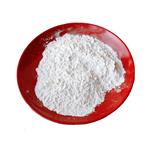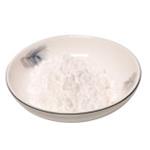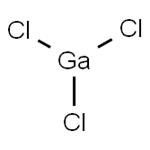- GALLIUM(III) CHLORIDE
-

- $0.00 / 25KG
-
2025-03-21
- CAS:13450-90-3
- Min. Order: 1KG
- Purity: 99%
- Supply Ability: 50000KG/month
- GALLIUM(III) CHLORIDE
-

- $30.00 / 1kg
-
2025-03-07
- CAS:13450-90-3
- Min. Order: 1kg
- Purity: 0.99
- Supply Ability: 30 tons
- Gallium Trichloride
-

- $0.10 / 1KG
-
2024-08-21
- CAS:13450-90-3
- Min. Order: 1KG
- Purity: 99.0%
- Supply Ability: 1000Tons
|
| | GALLIUM(III) CHLORIDE Basic information |
| | GALLIUM(III) CHLORIDE Chemical Properties |
| Melting point | 78 °C(lit.) | | Boiling point | 35 °C | | density | 2.47 g/mL at 25 °C(lit.) | | vapor pressure | 1 mm Hg ( 48 °C) | | Fp | −26 °F | | form | beads | | color | White | | Specific Gravity | 2.47 | | Water Solubility | Very soluble in water. Soluble in benzene, carbon tetrachloride and carbon disulfide | | Sensitive | Moisture Sensitive | | Merck | 14,4348 | | Stability: | Stability Stable, but reacts violently with water. | | InChIKey | UPWPDUACHOATKO-UHFFFAOYSA-K | | CAS DataBase Reference | 13450-90-3(CAS DataBase Reference) | | EPA Substance Registry System | Gallium trichloride (13450-90-3) |
| | GALLIUM(III) CHLORIDE Usage And Synthesis |
| Chemical Properties | Gallium trichloride is a colorless solid which
forms needle-like crystals. Acidic odor. | | Chemical Properties | white crystals or powder | | Uses | Gallium(III) chloride is a catalyst for a number of transformations including the ring opening and recyclization of epoxides and the trimerization of alkynes. It is used to detect the solar neutrions. | | Uses | Lewis acid catalyst in organic synthesis; reagent for generating organogallium compounds, metallic gallium, and gallium semiconductors. | | Production Methods | The trichloride salt of trivalent gallium is prepared by the
action of either hydrogen chloride or chlorine on the metal. | | General Description | Colorless needles. Used as a raw material in the production of metallic gallium and in the processing of mono crystal semiconductor compounds. | | Air & Water Reactions | Water soluble. | | Reactivity Profile | GALLIUM(III) CHLORIDE acts as a weak inorganic acid. Materials in this group are generally soluble in water. The resulting solutions contain moderate concentrations of hydrogen ions and have pH's of less than 7.0. They react as acids to neutralize bases. These neutralizations generate heat, but less or far less than is generated by neutralization of inorganic acids, inorganic oxoacids, and carboxylic acid. They usually do not react as either oxidizing agents or reducing agents but such behavior is not impossible. Many of these compounds catalyze organic reactions. | | Health Hazard | (Non-Specific -- Gallium Compounds) In view of the toxicity of gallium and its compounds, as shown by experiments, all persons involved in work with these substances should undergo periodic medical examinations, during which special attention should be paid to the condition of the liver, respiratory organs, and skin. | | Fire Hazard | Emits toxic chloride fumes when heated to decomposition. Decomposes upon sufficient heating. | | reaction suitability | reagent type: catalyst
core: gallium | | Potential Exposure | Used as a raw material in the produc tion of metallic gallium; and in the processing of mono crystal, semiconductor compounds. | | Shipping | UN3260 Corrosive solid, acidic, inorganic, n.o.s.,
Hazard class: 8; Labels: 8-Corrosive material, Technical
Name Required. UN1759 Corrosive solids, n.o.s., Hazard
class: 8; Labels: 8-Corrosive material, Technical Name
required. | | Purification Methods | The pure compound can be obtained by redistillation in a stream of Cl2 or Cl2/N2 followed by vacuum sublimation or zone refining. It forms colourless needles which give gallium dichloride [Ga(GaCl4), m 172.4o] on heating. It dissolves in H2O with liberation of heat. It is soluble in Et2O and can be extracted from an HCl solution with Et2O. [Laubengayer & Schirmer J Am Chem Soc 62 1579 1940, D.nges in Handbook of Preparative Inorganic Chemistry (Ed. Brauer) Academic Press Vol I p 846 1963.] |
| | GALLIUM(III) CHLORIDE Preparation Products And Raw materials |
|